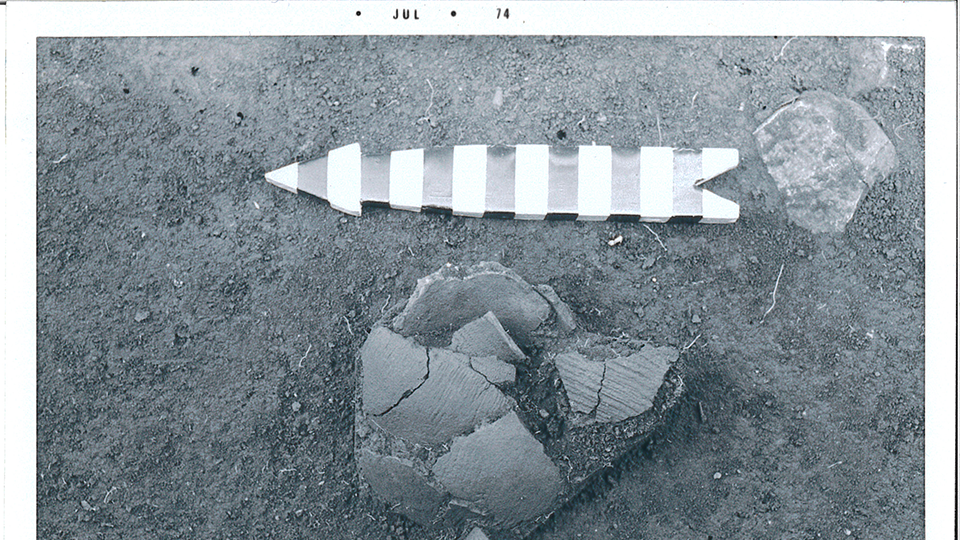
At-home activity: Make your own archaeological dig
TURN ON THE SCIENCE
Make Your Own Archaeological Dig
One way that archaeologists determine the age of an artifact is by stratigraphy. Over time, soil and debris accumulate and form different layers in the ground. By determining the stratum, or layer, of earth in which an object was found, archaeologists can estimate when it was last used. In general, objects found in lower strata are older than those above.
By comparing an object to other artifacts found in that layer, they develop a better understanding of the people living at the site at that time.
To get a better understanding of stratigraphy, let’s create a model archaeological dig.
Directions
What You Will Need
1 box of table salt
Food coloring
4 small containers
1 glass jar
Fossils or seashells
Artifacts like broken ceramics or coins
1 modern item like a plastic bottle cap or toy
Separate the salt into the containers. Add a different tint of food coloring to each. Mix the contents until the salt is tinted.
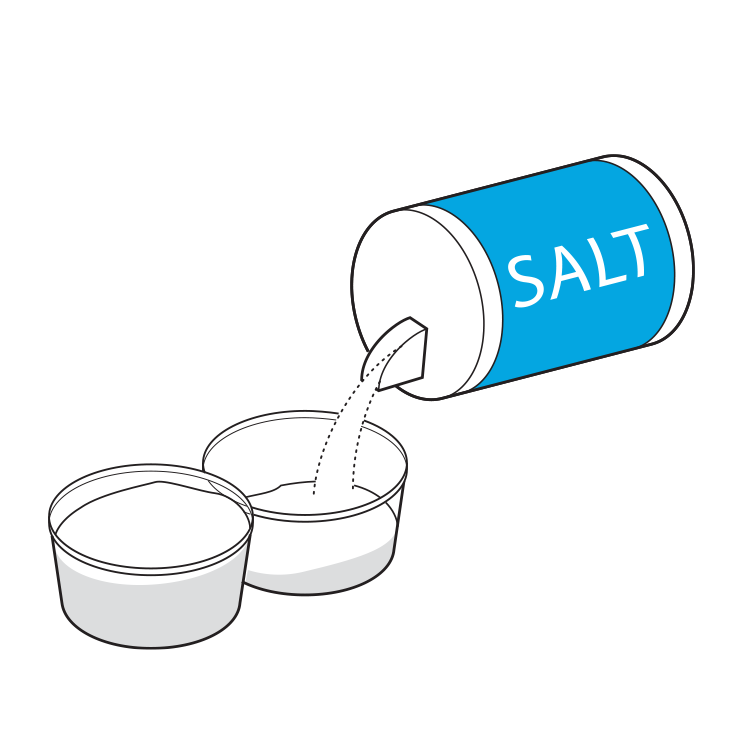
Place the fossils into the glass jar. Pour one of the tinted salts over them. This layer represents the earliest eras of life on our planet.
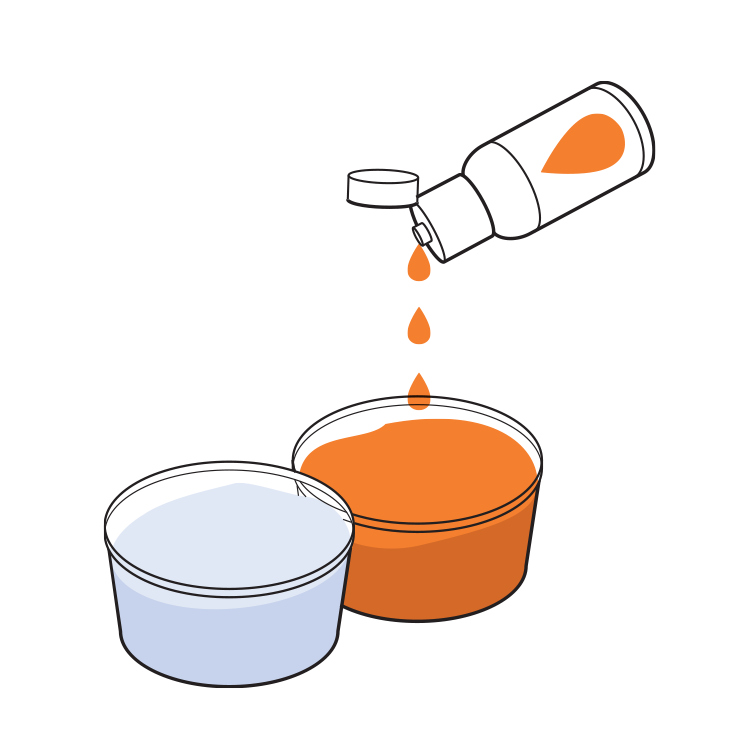
Next, place some of the artifacts into the jar. Pour a different color of salt over them. These layers represent early human history.
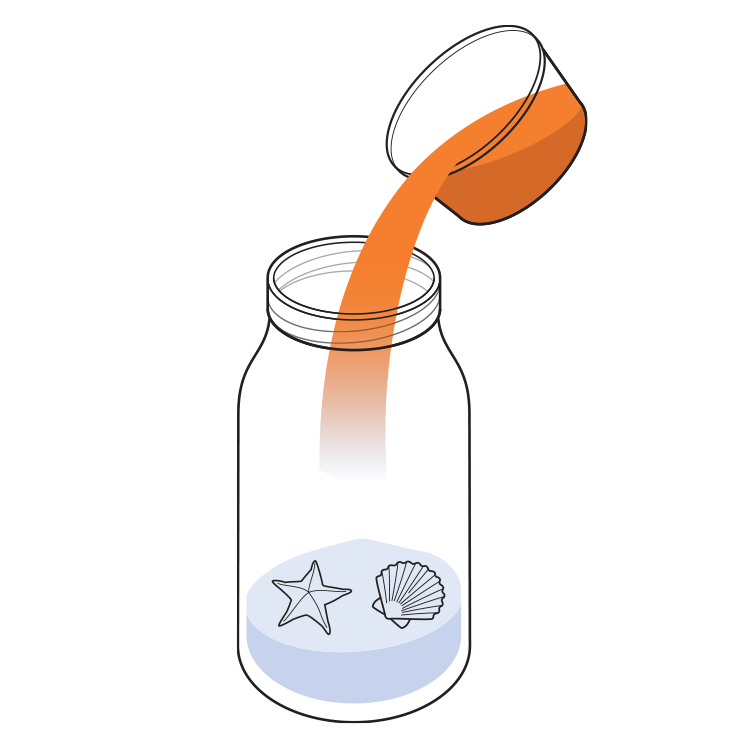
Repeat this process until all the artifacts and salts are used.
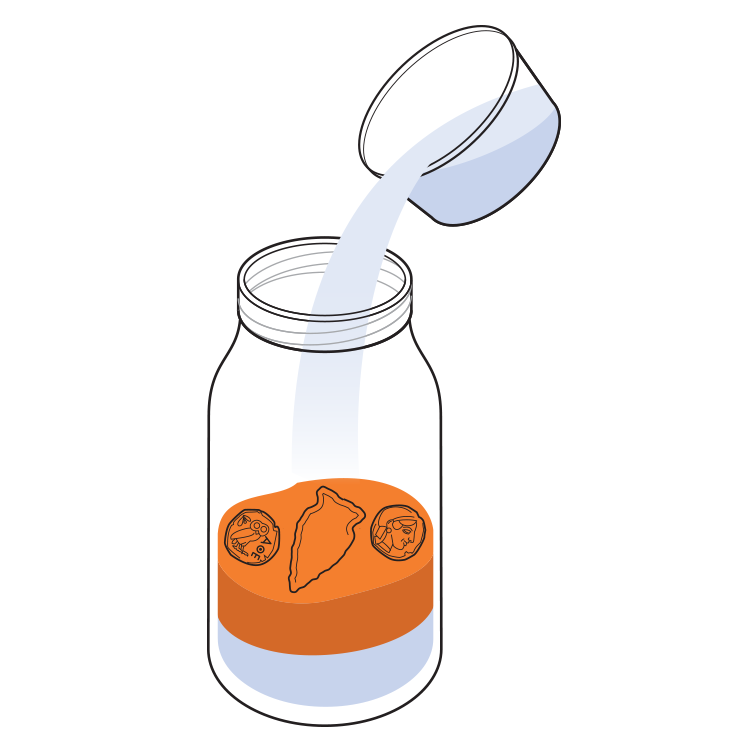
On the final layer, place the modern item. It represents today’s culture.
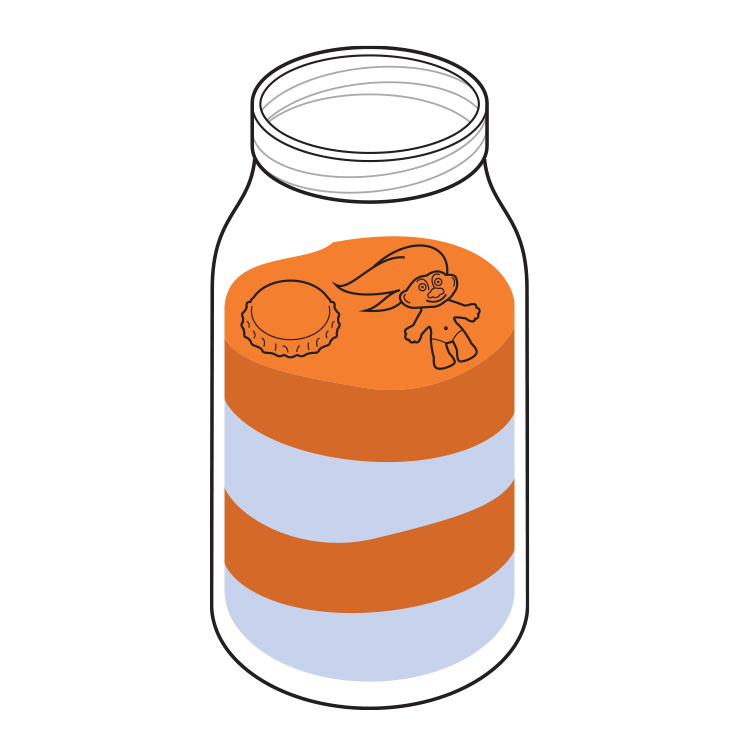
Once you've placed your layers, observe the stratigraphy. Can you still see your items through the layers? What happens if you pour water on top or freeze the containers? How many years do you think each layer could represent?
We hope you enjoyed creating your own archaeological dig at home. Ready to find out more about your household culture? Try our trash to treasure activity.